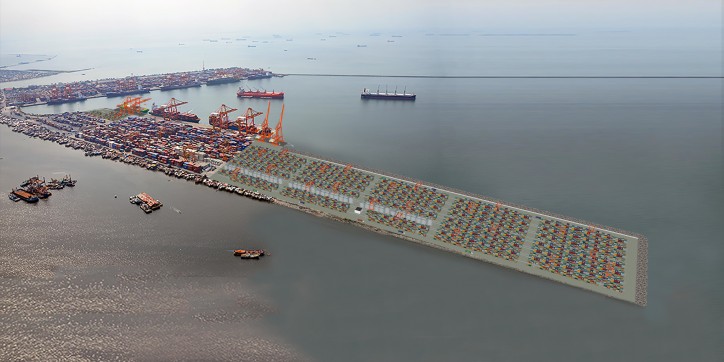The Philippine Ports Authority (PPA) has given the nod for capacity improvements at the Manila International Container Terminal (MICT), the flagship operation of International Container Terminal Services, Inc. (ICTSI).

Foremost among these improvements is the first phase construction of Berths 7 and 8, set to begin on October 15. The second phase, to begin in February 19 pending final approvals, will add full back up area for the future berths 9 and 10.
The berth expansion, all with a controlling depth of 13.5 to 14.5 meters, will further strengthen MICT’s capacity to service the world’s larger box ships and the increasing volume that comes with them, explains Christian R. Gonzalez, ICTSI Global Corporate Head: “On top of our commitments, the construction of these berths is our response to the need for an increase in capacity and increased productivity over the longer term. We also need to accommodate system changes, such as a steady increase in vessel size, the consolidation of major shipping players, and the introduction of rail services.”
Along with the berth expansion will be the addition of yard space with the construction of the back-up area for berths 9 and 10. When completed, this additional area will give the terminal substantial flexibility to deal with the increasing impact of weather related issues and changes in the regulatory environment.
Complementing these capacity improvements are the upcoming arrivals of 16 new rubber-tired gantries (RTG) in 2019, with the first eight RTGs available by April next year.
At the quay, two more super post Panamax quay cranes are expected to be delivered by next year. Three QCs were delivered earlier in the year and are already operational.
The construction of berth 7 is part of ICTSI’s contractual obligations to upgrade, expand and develop the MICT under its 25 contract with the PPA. For 2018 alone, the ICTSI Group has allocated more than US$380 million for capital expenditure, including the expansion of the Manila flagship.
As part of ICTSI’s pitch towards greater inter-modal connectivity – international cargo bound for domestic ports and domestic goods bound for the international market need not go outside of the port zone through a direct connection between the MICT and North Port, the country’s premiere domestic gateway. Businesses using the Port of Manila now have flexible options for their containerized cargo needs through a dedicated container freight station (CFS) at North Port, and a logistics center within MICT.
From MICT and NorthPort, transfers are now possible through the Laguna Gateway Inland Container Terminal in Calamba and via barge and truck through the Cavite Gateway Terminal in Tanza.
Source: ICTSI